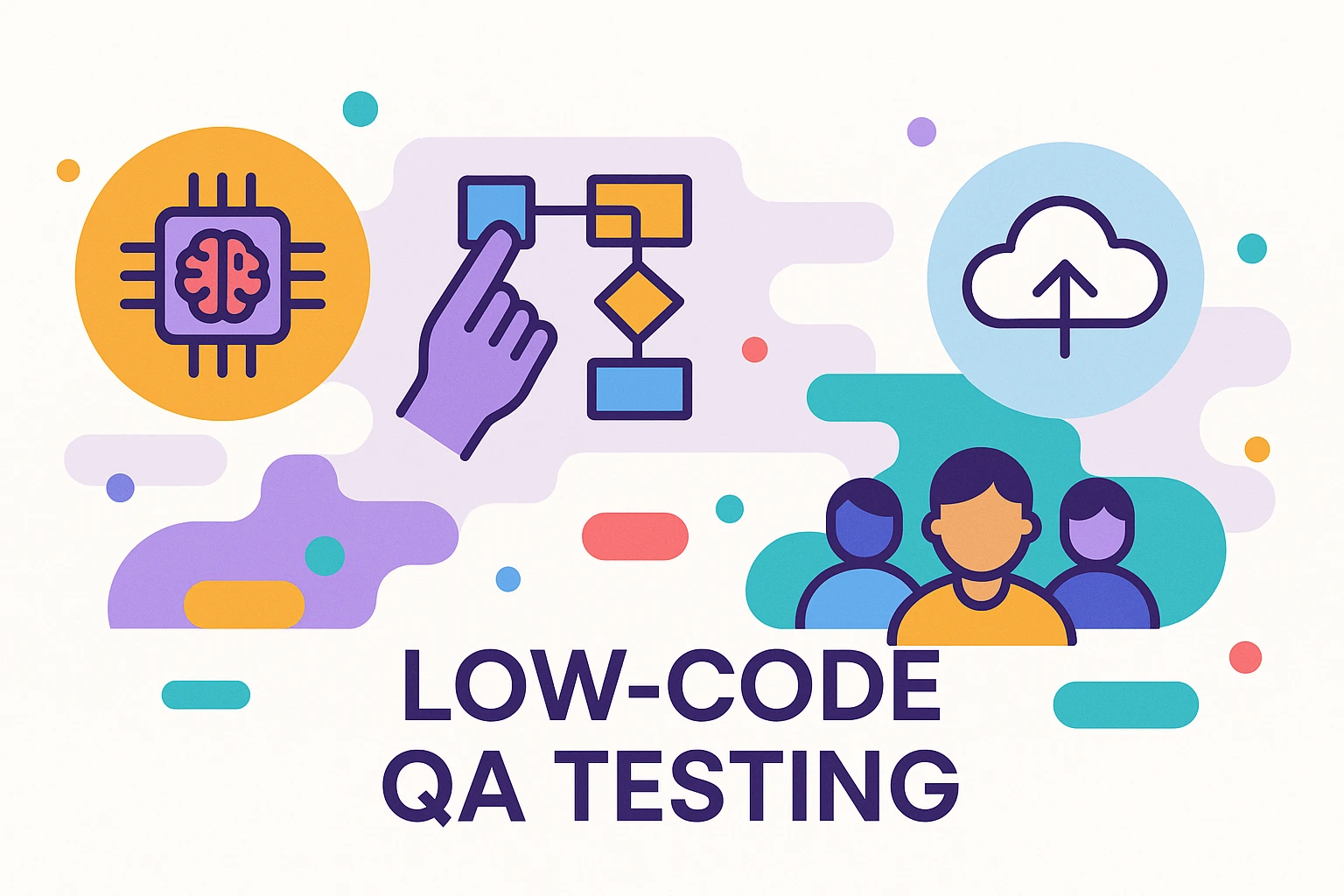
How a BDE Connects Business Vision With Technology
How a BDE Connects Business Vision With Technology Kumkum Kumari 21/11/2025At Speqto, we work with organizations that are constantly evolving entering new markets, scaling operations, or […]


Shipping quality software at startup speed takes more than devoted testers—it needs every stakeholder writing and running checks. Low-code test-automation platforms answer that call, letting product owners, designers, and junior devs create robust suites with drag-and-drop flows and AI-generated steps. In 2025 these tools have matured, bringing codeless recorders, self-healing locators, and cloud grids to the mainstream.
This post explores how low-code automation democratizes QA, slashes maintenance, and fits into modern CI/CD at Speqto.
Traditional Selenium or Playwright packs demand skilled engineers, brittle selectors, and constant upkeep. Business testers wait in line for script fixes, while coverage lags behind sprint velocity. The result: late bug discovery, longer cycles, and frustrated teams.
Speqto adopted a “citizen-tester” model—business analysts map user journeys in a visual editor; the platform turns them into executable tests. AI identifies elements by role and visual cues, so minor UI shifts no longer break suites. All runs trigger from GitHub Actions and report back to Slack and Jira within minutes.
• Katalon Studio—drag-and-drop web + API tests, plus smart locators.
• TestProject—cloud-hosted recorder with community add-ons.
• Autify—AI-powered self-healing for complex React UIs.
• BrowserStack Automate—runs suites across 3,000+ device-browser combos.
• GitHub Actions—orchestrates nightly and pull-request pipelines.
• Select critical journeys first: model checkout, login, and payments before edge cases.
• Enforce naming conventions: prefix objects with QA_ IDs so self-healing stays reliable.
• Parameterize data: drive tests from CSV/JSON to cover negative paths without cloning flows.
• Shift left: gate PRs with a smoke subset; run full regressions nightly.
• Monitor flakiness: quarantine any step failing >3 % and auto-notify maintainers.
• Natural-language test design: type “Add product to cart and verify total” → instant flow.
• Visual validation layers: pixel-diff overlays catch sneaky UI regressions.
• AI root-cause analysis: platforms suggest likely defects based on DOM and network logs.
• Self-configuring grids: cloud runners auto-scale, cutting queue time to near zero.
Since adopting low-code automation, Speqto tripled scripts authored per sprint, cut maintenance effort by two-thirds, and shortened release cycles from ten to just three days—while boosting critical-path coverage to more than 90 %.
Using Katalon’s recorder, a business analyst modelled patient-signup and prescription-refill journeys in two afternoons. Self-healing selectors survived three UI redesigns; production defects on those flows dropped to zero over six months.
Diagram: Product Owner → Low-Code Studio → GitHub Actions → Cloud Grid → Slack Results. Alt text: “Low-code automation pipeline democratizing QA.”
Low-code test automation empowers non-developers to protect quality, freeing QA engineers for deeper exploratory work. With self-healing AI, visual checks, and cloud scalability, teams ship faster and sleep better—making 2025 the year QA finally belongs to everyone.

How a BDE Connects Business Vision With Technology
How a BDE Connects Business Vision With Technology Kumkum Kumari 21/11/2025At Speqto, we work with organizations that are constantly evolving entering new markets, scaling operations, or […]

Apache JMeter Demystified: Your 7-Stage Blueprint for a Seamless First Performance Test
Apache JMeter Demystified: Your 7-Stage Blueprint for a Seamless First Performance Test Megha Srivastava 21 November 2025 In the intricate world of software development and deployment, ensuring a robust user experience is paramount. A slow application can quickly deter users, impacting reputation and revenue. This is where Apache JMeter emerges as an indispensable tool, offering […]

STRIDE Simplified: A Hands-On Blueprint for Pinpointing Software Threats Effectively
STRIDE Simplified: A Hands-On Blueprint for Pinpointing Software Threats Effectively Megha Srivastava 21 November 2025 In the intricate landscape of modern software development, proactive security measures are paramount. While reactive incident response is crucial, preventing vulnerabilities before they become exploits is the hallmark of robust software engineering. This is where threat modeling, and specifically the […]

From Static to Streaming: A Practical Developer’s Guide to Real-time Applications Using GraphQL Subscriptions
From Static to Streaming: A Practical Developer’s Guide to Real-time Applications Using GraphQL Subscriptions Shakir Khan 21 November 2025 The Paradigm Shift: From Static to Streaming Experiences In an era where user expectations demand instant gratification, the web has rapidly evolved beyond its static origins. Today, a modern application’s success is often measured by its […]

The TanStack Query Edge: Deep Dive into Advanced Caching for Optimal Application Speed
The TanStack Query Edge: Deep Dive into Advanced Caching for Optimal Application Speed Shubham Anand 21 November 2025 In the relentless pursuit of seamless user experiences and lightning-fast web applications, data management stands as a formidable challenge. Modern front-end frameworks demand intelligent solutions to handle asynchronous data, and this is precisely where TanStack Query (formerly […]